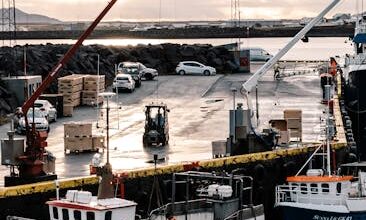The Road Ahead: Why London, Why Now?

London, a city synonymous with iconic black cabs and bustling red buses, is on the cusp of a revolutionary shift in urban transportation. The silent hum of electric motors, devoid of a human driver, is poised to become a familiar sound on its historic streets. Waymo, the trailblazing autonomous vehicle company, is setting its sights on the UK capital, promising a new era of self-driving taxi services.
This isn’t just another tech rollout; it’s a significant milestone for driverless technology on a global scale. Google’s autonomous taxi subsidiary will hit the UK’s capital next year, regulations permitting—but its first international service could be Waymo’s biggest challenge yet. The prospect of Waymo’s robotaxis navigating London’s intricate network of roads sparks both immense excitement and a healthy dose of skepticism regarding its feasibility and impact.
The Road Ahead: Why London, Why Now?
Waymo’s journey began in the arid landscapes of Phoenix, Arizona, where its self-driving cars have logged millions of miles, establishing a robust operational presence. Subsequent expansions to San Francisco and Los Angeles have further refined its technology and business model, proving its capabilities in diverse urban environments. The move to London represents a natural, albeit ambitious, step in its international expansion strategy.
London offers an unparalleled testing ground for advanced autonomous technology. As a global financial and cultural hub, it experiences immense traffic congestion and a constant demand for efficient, reliable transportation solutions. The city’s forward-thinking approach to technological innovation, coupled with a well-established regulatory framework for new transport initiatives, makes it an attractive market for Waymo’s robotaxis.
The UK government has also been actively preparing the ground for autonomous vehicles. Recent legislative efforts aim to provide a clear legal framework for self-driving cars, addressing aspects like liability and road safety. This proactive stance signals a welcoming environment for companies like Waymo, eager to introduce their cutting-edge driverless car technology to a new populace.
Building on Global Experience
Waymo’s extensive operational experience in the US, particularly in complex urban settings like San Francisco with its hills and unique road layouts, provides a strong foundation. This experience has allowed the company to continuously collect data, refine its AI algorithms, and enhance the safety and reliability of its self-driving system. Every mile driven contributes to a more robust and intelligent autonomous vehicle fleet.
The company’s commitment to safety is paramount, underscored by its rigorous testing protocols and incident reporting. This track record will be crucial in building public trust and demonstrating the viability of autonomous transportation in London’s unique setting. The promise of reduced accidents and improved urban mobility through Waymo’s technology is a powerful driver for its expansion.
Navigating London’s Labyrinth: Unique Challenges for Robotaxis
While London presents an exciting opportunity, it also poses a formidable test for Waymo’s autonomous vehicle technology. The city’s urban landscape is vastly different from the more grid-like structures of many US cities. London’s ancient street patterns, often narrow, winding, and lacking clear lane markings, will demand an exceptionally sophisticated level of perception and navigation from Waymo’s robotaxis.
The sheer density and diversity of road users are another significant challenge. Cyclists, pedestrians, scooters, buses, and traditional taxis all vie for space, often with unpredictable movements. Waymo’s self-driving cars will need to flawlessly interpret and react to this dynamic environment, where human driving cues are subtle and often unspoken. The infamous London weather, with its frequent rain and fog, also adds a layer of complexity for sensor performance.
Regulatory Hurdles and Public Perception
Beyond the physical infrastructure, the regulatory landscape, though progressing, still requires careful navigation. Obtaining the necessary permits and ensuring compliance with UK and London-specific transport laws will be a continuous process. Waymo will need to work closely with local authorities to tailor its service and technology to meet specific requirements for autonomous vehicles in the UK.
Perhaps the most critical challenge is public acceptance. Londoners are known for their strong opinions and traditions, and the introduction of driverless cars will undoubtedly spark debate. Building trust and demonstrating the safety and convenience of Waymo’s robotaxis will be essential. Education campaigns, transparent operations, and perhaps initial supervised deployments will be vital to winning over the hearts and minds of the capital’s residents.
More Than Just a Ride: The Potential Impact of Robotaxis
Should Waymo successfully integrate its robotaxis into London’s transport ecosystem, the potential benefits extend far beyond simply offering a novel way to get around. The introduction of Waymo UK could significantly alleviate some of London’s most pressing urban issues. Imagine a future with fewer traffic jams, cleaner air, and more accessible transportation options for everyone.
Reduced congestion is a primary promise of autonomous vehicles. Optimized routing and platooning could lead to more efficient use of road space, theoretically easing the notorious gridlock that plagues the city. Furthermore, a fleet of electric Waymo vehicles would contribute to London’s ambitious environmental goals by reducing tailpipe emissions and improving air quality across the capital.
Transforming Urban Mobility
For individuals, particularly those with mobility challenges, Waymo’s self-driving cars could offer unprecedented independence and accessibility. The on-demand nature of robotaxi services provides a flexible and reliable alternative to traditional public transport and private car ownership. This could empower more people to travel freely and participate fully in the city’s vibrant life.
Economically, the presence of advanced autonomous vehicle technology could stimulate innovation within the UK tech sector, creating new jobs in areas like software development, maintenance, and logistics. It also presents an opportunity for London to cement its position as a global leader in smart city initiatives and future transportation solutions, attracting further investment and talent.
Conclusion
Waymo’s impending arrival in London marks a pivotal moment in the global expansion of autonomous vehicle technology. It’s a bold venture, bringing cutting-edge innovation to a city steeped in history and complexity. While the challenges, from navigating ancient streets to winning public trust, are significant, the potential rewards for London in terms of improved safety, efficiency, and environmental sustainability are immense.
As the capital prepares to welcome its first fleet of Waymo robotaxis next year, the world will be watching. This isn’t just about a new mode of transport; it’s about reimagining urban life and paving the way for a smarter, more connected future. London’s journey with Waymo promises to be an exciting ride, demonstrating how innovation can transform one of the world’s greatest cities for generations to come.





